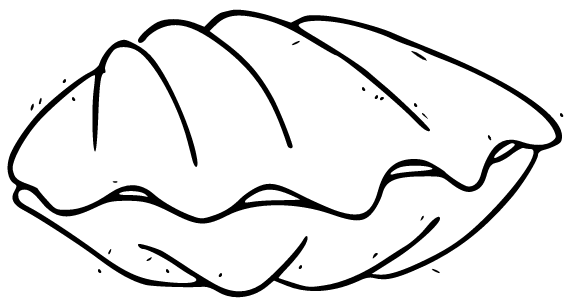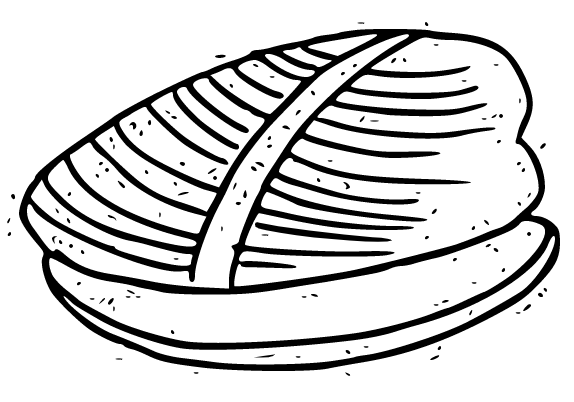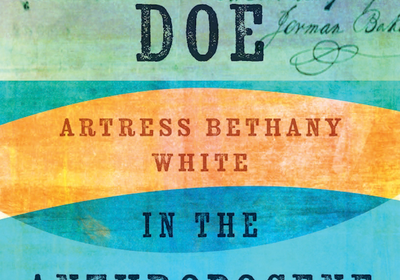-

-
The Discerning Mollusk's Guide to Arts & Ideas
-


A Black Doe in the Anthropocene
Artress Bethany White
University Press of Kentucky, Jun 2025
aking history isn’t only a matter of doing something. It’s also the act of telling something, constructing a narrative about the past that informs the present. In her latest collection of poetry, A Black Doe in the Anthropocene, Artress Bethany White draws on her family history, particularly the enslavement of her ancestors in Virginia and North Carolina, and in unearthing their story she recounts a broader story of African diaspora.
The section entitled “Original Sin” opens with an erasure poem called “A Family History,” which begins
“(In the 1700s, a Scottish immigrant)made his way to the(began)
shores of British America andthe process of(purchasing)land and slaves, to build(a plantation empire). (This family),with the(Hairston),
surnamewould establish a practice of their slaves not, (both white and Black)” . . .
regularly being sold outside the family. As a result
What is going on here? The crossed-out words, which recall the tone of a textbook description, appear to attenuate or obfuscate the circumstances. (The reference to keeping the enslaved in the family is explored later in the book.) Here the poet is announcing, in effect, both a politics and an aesthetic. White is not only observing, but seeing through.
Some of the most trenchant poems in A Black Doe are, in fact, acts of reading. In “A Creased Page from a Hairston Plantation Ledger,” the speaker considers a list of humans for sale, a sort of grisly menu, and she wonders at variations in price:
“Today I sift through the names of thirty enslaved
and pause over the sum of $1,000
to see what I imagine a planter might see:
a Black man full of genetic seed
and future saleable progeny.
No wait, it’s the price of John[s] Daughter,
zeros now plain as lust’s desire.”
Of all the names mentioned in the poem, “John[s] daughter” is the most expensive, costing more, for instance, than Sam $650 or even Bill Bradley $850 (“Not everyone / has this last name or a price so high; / it may be literacy or some other skilled pedigree.”) Although this daughter doesn’t even possess a first name in the ledger, she must possess something else to justify the price. Supply and demand, for the enslaver, is a hermetic affair, placing a high value on the dispensation to rape.
White returns repeatedly to this reality. In “Oral Slave Narrative,” she recounts how a family’s oral history is sanitized for childish ears, “unsure how babies were made.” Avoiding the subject of rape might be understandable in conversations with the very young, but the poem underlines how this avoidance has infiltrated the consciousness of adults, and infantilized the understanding of history and of personal identity.
Reading A Black Doe, I thought of my history textbooks in secondary school. I recall that the descriptions of slavery were sober, brief, and without any mention of systemic rape. Actually, what made the biggest impression on me wasn’t the text but rather a diagram of a slave ship and the horrific claustrophobic conditions of the Middle Passage. Once I’d seen it, I couldn’t unsee it.
White accomplishes something similar here in regard to sexual abuse. Once seen, you cannot unsee it. Of course, this subject is not really “news”—White places an epigraph from Harriet Jacobs’ 1861 Incidents in the Life of a Slave Girl: Written by Herself at the beginning of the book, which addresses the subject head on. But averting eyes has become an ingrained cultural habit, one that persists to this day.
In another poem about reading, “An Extant Slave Receipt Signed Peter Hairston,” she considers a receipt dated 1777 for an ancestor who is namelessly described as a “Negro wench and child” and ruefully remarks,
“It is not enough that the sweat of the planter seller
is mixing with the DNA of my fingertips
as his genetic code resides within me.
My inheritance the oft-turned phrase
This family had a habit of not selling off their slaves
and so many receipts neatly tucked away.”
Something very similar to this “oft-turned phrase” was crossed out in the poem cited earlier, “A Family History.” References to the family’s “habit” or “practice” are rather euphemistic—is there even an implied paternal benevolence there?—instead of a recognition of the use of women for forced sex or as “breeders.”
Formally speaking, most of A Black Doe is written in free verse, with occasional rhymes reflecting speech patterns. It also includes nocturne, aubade, and a sharply observed ghazal entitled “Runners,” dedicated to Ahmaud Arbery. The text of “Runaway Slave Affidavit Dated March 1831” is an interesting experiment in found poetry, where White inserts line breaks into a document submitted to a Virginia magistrate and renders the legalistic language in short bursts of free verse. It’s an astute choice, as the blank space on the page actually makes the procedural brutality more stark.
At first I thought A Black Doe in the Anthropocene was an unwieldy title, but upon finishing the book, it seems apt. The historical scope here is vast, and frankly, not easy to parse within the confines of a review. I’ve referred mainly to poems about slavery, which is central to the collection, but White also writes about emigration to Liberia, Reconstruction, contemporary Ghana and recent atrocity in Charlottesville, among other subjects. This is both a work of scrupulous research and a chronicle of White’s own experiences in the glare of recent events.
A Black Doe in the Anthropocene is unflinching, ambitious work, a distillation of historical consciousness into poetry.

Charles Holdefer lives in Brussels. His latest novel is Don’t Look at Me (Sagging Meniscus, 2022).